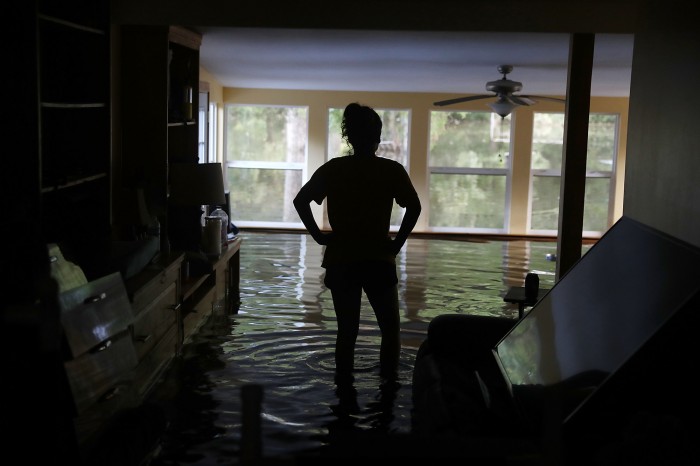Less Than a Month After Historic Floods in Louisiana, We Know Climate Change Played a Role
Not long ago, whenever a freak blizzard blanketed the Eastern Seaboard or torrential rains brought floods to the Midwest, we were discouraged from mentioning the words “climate change.” Global warming was real, we were told, but climate science measured change on a planetary scale—it had little to say about individual weather events.
Just a few weeks after 30 inches of rain fell on parts of southern Louisiana, causing floods that killed 13 people and forced tens of thousands from their homes, the picture is a lot different. Researchers at the National Oceanic and Atmospheric Administration have already taken weather data from the event, plugged it into high-resolution climate models, and come up with results.
They report that climate change upped the probability of catastrophic rainfall occurring along the Gulf Coast from once every 50 years to once every 30 years—an increase of 40 percent (and that’s being very conservative, they say). Put another way, residents in the area have a lot less time to recover before they can expect another deluge.

This kind of study is relatively new. Scientists have modeled how greenhouse gases affect long-term trends like the seasonal frequency of hurricanes, droughts, or monsoons. But it’s only recently that computing power and global climate models have progressed to the point where researchers can take short-term weather data, perform the numerous model runs needed to come up with a significant result, and figure out how much human activity has tipped the scales toward extreme weather.
Insurance companies, too, have found ways to predict, within a few meters, which houses will be inundated during an extreme weather event. Their methods are different from those of climate modelers, but in some cases they can be used to warn policy holders and help them take steps to mitigate damage to their houses.
The hope behind this type of work is that global warming will no longer be just an abstract concept, with effects that are hard for normal people to wrap their heads around. Instead of presenting scary numbers about what a century of sea-level rise might look like, the science has gotten to the point where it can explain, in sometimes painful detail, just how much the disasters affecting us today are of our own making.
(Read more: Climate Central, Washington Post, New Scientist, “Climate Change Is Challenging the Time-Tested Assumptions Behind Insurance”)
Keep Reading
Most Popular
Large language models can do jaw-dropping things. But nobody knows exactly why.
And that's a problem. Figuring it out is one of the biggest scientific puzzles of our time and a crucial step towards controlling more powerful future models.
The problem with plug-in hybrids? Their drivers.
Plug-in hybrids are often sold as a transition to EVs, but new data from Europe shows we’re still underestimating the emissions they produce.
How scientists traced a mysterious covid case back to six toilets
When wastewater surveillance turns into a hunt for a single infected individual, the ethics get tricky.
Google DeepMind’s new generative model makes Super Mario–like games from scratch
Genie learns how to control games by watching hours and hours of video. It could help train next-gen robots too.
Stay connected
Get the latest updates from
MIT Technology Review
Discover special offers, top stories, upcoming events, and more.